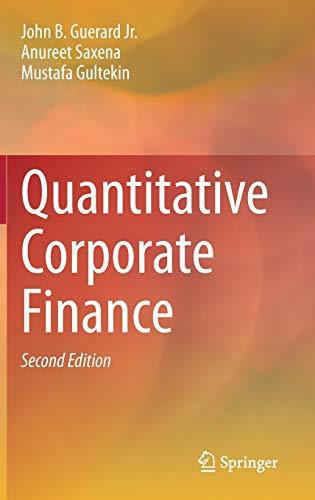Question
Hello, My teacher handed out a practice with this question, and I am not sure how he managed to get the answers provided below. so
Hello, My teacher handed out a practice with this question, and I am not sure how he managed to get the answers provided below. so a step-by-step answer would be great.
Question
Illustrate an example of trade induced by comparative advantage. They assume that China and France each have 1,000 production units. With one unit of production (a mix of land, labor, capital, and technology), China can produce either 10 containers of toys or 7 cases of wine. France can produce either 2 cases of toys or 7 cases of wine. Thus, a production unit in China is five times as efficient compared to France when producing toys, but equally efficient when producing wine. Assume at first that no trade takes place. China allocates 800 production units to building toys and 200 production units to producing wine. France allocates 200 production units to building toys and 800 production units to producing wine.
a. What is the production and consumption of China and France without trade?
b. Assume complete specialization, where China produces only toys and France produces only wine. What would be the effect on total production?
c. Chinas domestic price is 10 containers of toys equals 7 cases of wine. Assume China produces 10,000 containers of toys and exports 2,000 to France. Assume France produces 7,000 cases of wine and exports 1,400 cases to China. What happens to total production and consumption?
d. Frances domestic price is 2 containers of toys equals 7 cases of wine. Assume China produces 10,000 containers of toys and exports 400 containers to France. Assume France in turn produces 7,000 cases of wine and exports 1,400 cases to China. What happens to total production and consumption?
e. What happens to total production and consumption if they trade at negotiated mid-price of 6 toys = 7 wine? Assume France exports 1,400 units of wine.
GIVEN ANSWERS
a. Production if there are no trade Toys Wine CHINA Allocated production units to 800 200 Produces and consumes (output per unit x units allocated) 8,000 1,400 FRANCE Allocated production units to 200 800 Produces and consumes (output per unit x units allocated) 400 5,600 Total production and consumption across both countries 8,400 7,000
b. Production if there are complete specialization Toys Wine CHINA Allocated production units to 1,000 - Produces and consumes (output per unit x units allocated) 10,000 - FRANCE Allocated production units to - 1,000 Produces and consumes (output per unit x units allocated) - 7,000 Total production and consumption across both countries 10,000 7,000 The combined production of both countries is 10,000 containers of toys, 1,600 more containers of toys than before specialization, with wine production remaining unchanged.
c. TOYS WINE Domestic Domestic Trade at China's domestic price (10 toys = 7 wine) Consumption Consumption CHINA Produces and consumes (output per unit x units allocated) 8,000 1,400 FRANCE Produces and consumes (output per unit x units allocated) 2,000 5,600 Total production and consumption across both countries 10,000 7,000 With complete specialization, toy production in total is increased as in Problem 2. Toy production and consumption in France increases from 400 containers of toys before trade to 2000 containers after trade, a gain in consumption of 1600 containers.
d. TOYS WINE Domestic Domestic Trade at France's domestic price (2 toys = 7 wine) Consumption Consumption CHINA Produces and consumes (output per unit x units allocated) 9,600 1,400 FRANCE Produces and consumes (output per unit x units allocated) 400 5,600 Total production and consumption across both countries 10,000 7,000
e. TOYS WINE Domestic Domestic Trade at Negotiated Mid-Price (6 toys = 7 wine) Consumption Consumption CHINA Produces and consumes (output per unit x units allocated) 8,800 1,400 FRANCE Produces and consumes (output per unit x units allocated) 1,200 5,600 Total production and consumption across both countries 10,000 7,000 China gains 800 more containers of toys (8,800 post-trade compared to 8,000 pre-trade), and enjoys the same level of wine consumption (1,400). France gains 800 more containers of toys (1,200 post-trade compared to 400 pre-trade), and enjoys the same level of wine consumption (5,600). Wine production therefore remains the same as before trade, but now the 1,600 increased production of toys is split evenly between the two countries.
Step by Step Solution
There are 3 Steps involved in it
Step: 1

Get Instant Access to Expert-Tailored Solutions
See step-by-step solutions with expert insights and AI powered tools for academic success
Step: 2

Step: 3

Ace Your Homework with AI
Get the answers you need in no time with our AI-driven, step-by-step assistance
Get Started


